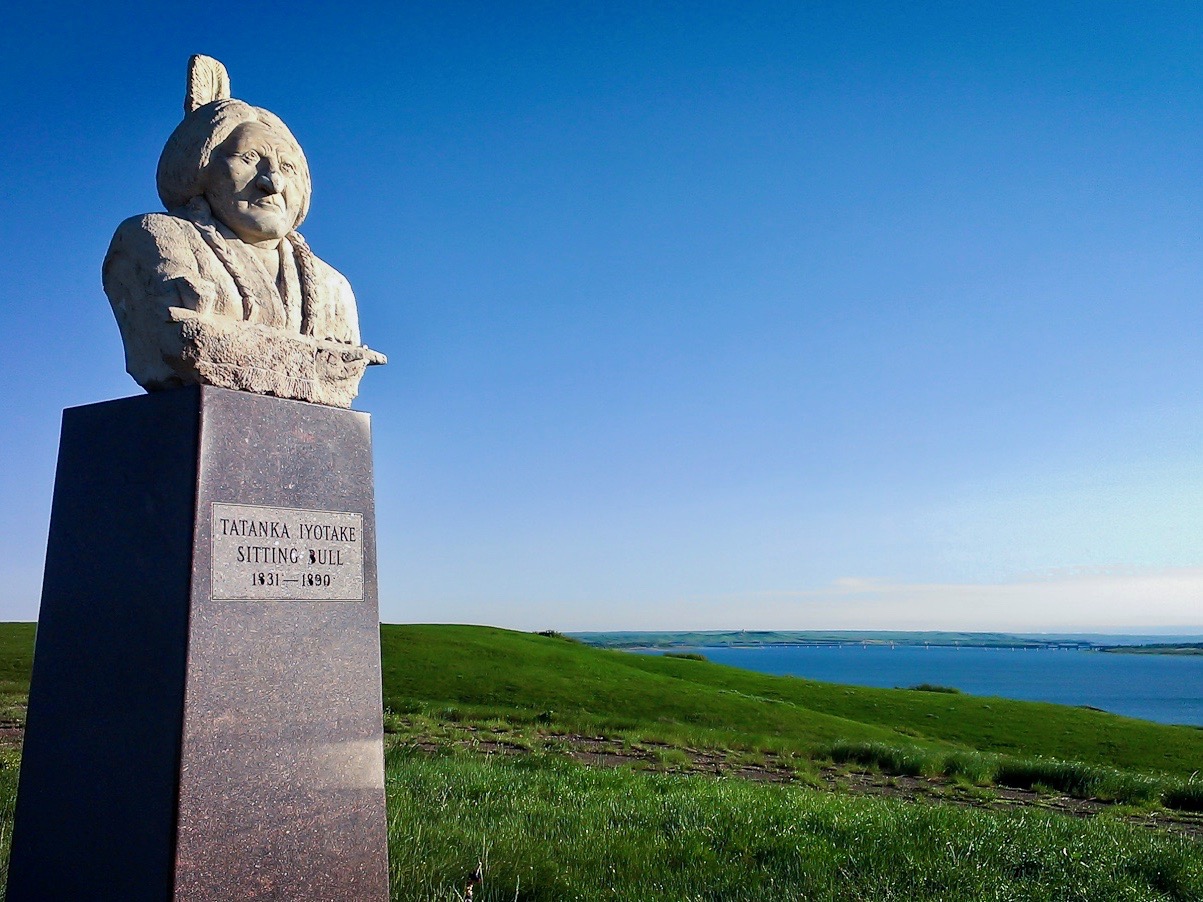Notes from Indian Country
Lions, tigers and bears; oh my
By Tim Giago (Nanwica Kciji – Stands Up For Them)
Let’s talk about bears. That’s right bears.
First of all the Lakota were famous for their close ties to animals like bears, wolves, buffalo, and even birds. As a result, whether by dream or deed, many Lakota ended up with names akin to one of these animals and it seems that the bear was extremely popular among tribal members.
Some of the family names associated with bears that I remember were Two Bears, Slow Bear, Quick Bear, Yellow Bear, Black Bear, Brown Bear, Poor Bear, Bear Nose, Bear Runner, Four Bears, Holy Bear, and Spotted Bear, to name a few. I never heard of a Honey Bear, have you? I’m sure that after this column is posted a lot more bear names will appear.
The Lakota and many of the different Tribes held a close association or I should say relationship with animals and often when a tribal member was on a hemblechiya, crying for a dream or vision quest, it was the vision of an animal that came to them during the quest. It is said that Tasunka Witko, Crazy Horse, dreamed of horses dancing wildly hence his name Crazy Horse and Tatanka Iyotanka, Sitting Bull, dreamed of a great bull buffalo sitting on a hill surveying its kingdom. Sitting Bull dreamed of American soldiers falling from the sky a couple of days before the battle of the Little Bighorn, or Greasy Grass as the Lakota called it. After a vision the warrior would sit down with his wicasa wakan, Holy Man, for the interpretation of his vision or dream.
Now birds may not have the same significance to the Lakota as bears, but here are a few birds that made the list. We have Black Bird, Blue Bird, Swan, Yellow Bird, White Magpie, and Two Crows. Many Lakota took the name of eagles and hawks. Oh yes, we also have Prairie Chicken which in reality is a bird of sorts.
 Tim Giago. Photo
courtesy Native Sun News
Today
Tim Giago. Photo
courtesy Native Sun News
Today
A friend of mine named Jimmy Garner gets
Native Sun News Today every week and loves it. He found the obituaries interesting because of the purely Indian names listed. He once asked, “How did the Lakota people come up with their names?”
I told him many of them got their names through visions, but that some had different names when they were children and then got another name when they became adults. They say that the great Lakota leader American Horse got his name because he was able to slip into an encampment of the U. S. Cavalry in the middle of the night and get away with several horses. Since they were American horses, he was awarded that name. And so many Lakota got their names through actions and deeds the accomplished in their lives. He asked. “Then how does that explain a name like Rain in the Face?” Good question, no answer.
Many years ago when the Iyeska or interpreters were translating names for the Bureau of Indian Affairs census they often got the names wrong or because some of the names were very long they intentionally shortened them. The great Lakota artist Felix Walker was given the original name Felix Walks Under the Ground and Comes Up Holy Two Sticks. He was the artist who painted the interior spirals at the Holy Rosary Indian Mission Church in the 1930s.
It is said that as the days grew long and the Iyeska grew tired they rushed through the Indian names of many Lakota without getting the translation right. And in stupid jest even gave some Lakota names that were funny to them at the time, but terrible to the Lakota men and women who has to live with them. One name given out was Urinates on the Side of the Road and it was given by an Iyeska who was just tired and wanted to end his day. I’ve heard of worse names that are unprintable here. What a rotten way to make a joke out of a given name. I heard that the translators would sit around and throw out names and then laugh their heads off. They weren’t a bit funny to the Lakota who got stuck with the names.
Did names like Lays Bad or Loafer have an entirely different meaning in the original Lakota language? Some of us suspect that they did. There was a great Lakota warrior name Gaul. How did this name come about? Gaul is actually a region in France.
But the main source of names for the Lakota of old were the four-legged and the winged. They took the names of the very animals they depended upon to survive.
The great tribes of the Western Hemisphere had a history, a culture, traditions and a deep spirituality long before the white man set foot upon this continent and to pretend, as most history books are prone to do, that history began with the arrival of the white man is ridiculous. And it galls me to no end to hear politicians talk about the “founding fathers” as if nothing in America existed before they “founded” it.
I guess I wondered off a little from lions, tigers and bears, but it seems that all of this is a part of our history.
Contact Tim Giago at najournalist1@gmail.com
Join the Conversation


